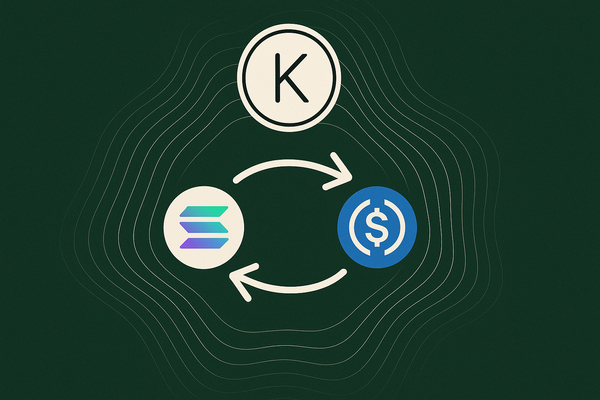Points Trading & Pre-Launch Markets - A Comprehensive Analysis
Has the airdrop meta gone too far this time or is this the start of a new narrative?

Speculation is the lifeblood of cryptocurrency markets, so it’s no surprise that savvy and opportunistic individuals find new ways to facilitate betting on assets. For the most part, people invest in things that already exist as there is some data one could base an informed decision on. However, recent market trends point to an increase in trading volume for airdrop allocations and the prices of unreleased assets (often times with leverage).
Bullets
- Introduction
- Historical performance
- Current pre-launch markets
- Points trading analysis
- Conclusion
Introduction
The surge of interest in pre-market trading is largely attributed to the countless number of airdrop campaigns and highly anticipated projects looking to take their tokens on the open market, capitalizing on the thriving market conditions and positive sentiment.
With all the necessary catalysts for a new narrative in place, protocols such as Aevo, Hyperliquid and Whales Market have stepped in to seize the opportunity. These platforms offer perpetual futures (among other things) for tokens that have yet to be released.
Keep in mind that these instruments are extremely volatile and should be used with caution, since the liquidity is questionable and determining the fair values of their underlying assets is very difficult if not impossible.
Given the highly speculative and risky nature of the financial products we just mentioned, there have to be some opportunities present to make it worthwhile for traders. Right? This is one of the questions we will try to figure out an answer to in this article by analyzing all of the market data we can get our hands on.

Historic Performance
Thanks to the power of hindsight and exchange APIs, we can observe the price performance of all the assets that were once traded in pre-markets and see how they are doing after officially launching.

A common pattern for most of these assets is relatively low volume after being listed and picking up the pace as the launch date draws nearer where peak volatility and volume is reached, after which the activity starts to dwindle unless the project shows promise.
Objectively speaking, every asset present in the table at some point reached a price that is higher than the initial listing price. Airdropped tokens have performed incredibly well in the last 6 months, despite the commonly held belief that they’ll nuke the instant they’re exchangeable.
This however does not mean that one should just bid every pre-market asset with size right after being listed. It doesn’t take much to move the price, meaning that liquidations are frequent and interest isn’t always guaranteed as the listing criteria is unknown.
In terms of trading volume, it’s evident that properly sought after assets, not the ones making rounds on Twitter solely because of their incentives, garner significantly more attention than other upcoming tokens, with most being unable to do more than 100k in daily volume.
In the case of Jupiter, they stole the show by sucking up the most amount of liquidity after being hyped up for quite a while during the great Solana expansion.
Current Pre-Launch Markets
Having gone over the historical data, let’s take a look at the present opportunities. As of today, there are plenty of unreleased tokens available for trading on Aevo and Hyperliquid.

There isn’t much active trading taking place, except for Parcel and Portal, which are freshly listed. Strictly focusing on price performance, most of them have performed well with a few doing multiples over the course of many months.
Let’s select a few interesting entries from the list and see if we can determine whether their valuations are comparable to similar protocols:
Wormhole (W) — Bridge;

Relevant ratios indicate that Wormhole’s current theoretical valuation might be unjustly inflated in contrast to alternative solutions on the market. Unless something groundbreaking is unveiled, the price could go lower after the token generation event has concluded as most of the interest in it reflected by volume was expressed at the lows.
Blast (BLAST) — L2;

Whereas the speculative FDV could easily change in billions at any moment, TVL metrics indicate that there’s apparent interest in Blast’s ecosystem (most likely due to depositors expecting an airdrop).
Judging by the way L2s are priced, Blast does seem undervalued at the moment on paper, but more information needs to be taken into consideration when trying to reach a definitive conclusion. Unfortunately there is little info on it’s on-chain happenings apart from TVL, making the evaluation process difficult.
Points Trading Analysis

Something the market can’t get enough of as of late — points, are now tradable on Whales Market, a decentralized over the counter trading platform.
“2024 will be the ‘golden year’ for airdrops” - @CC2Ventures
Said by one of the most prolific airdrop farmers in the space, being an airdrop farmer has probably never been as lucrative as it is now. The sheer amount of protocols announcing their points programs have led us to a point where user interactions are monetized and incentives are a must if you want to gain traction as a project.
It’s only natural that a marketplace for these wares eventually emerges. Having such an outlet allows airdrop farmers to prematurely sell their harvests, investors bullish on a project to secure an allocation and so on.
Whales Market has to date facilitated $6.3m worth of peer to peer trades for these interaction points and is in an unique position to further grow this metric as more and more offers get listed.
There are currently 9 protocols whose points can be actively traded on the platform: Parcl, Kamino, Ethena, Magic Eden, Hyperliquid, EigenLayer, friend.tech and ether.fi. In the near future Marginfi, Drift and Blast should be available as well.
Below is an overview of the most popular campaigns available at the moment:

Looking at the average and median filled order prices, it’s clear that in some cases the distribution of prices is all over the place as it can innately be skewed with fugazi orders and initial uncertainty when the assets first get listed.
By now, a seemingly fair value for some of these points has been established, but what does the value of a point signify exactly?
The price of a point may give us a hint at what the market expects the upcoming protocol to be currently valued at. As more points get farmed, it’s probable that their price could drop due to dilution of rewards unless the sentiment changes and the expected valuation rises.
Let’s test this idea by using EigenLayer as an example to guesstimate a running value.
Price per Point = 0.155
Total Supply of Points = 1 963 113 523
Airdrop Value = Price per Point * Total Supply of Points = 304 282 596
(Theoretical) Airdrop Distribution = 0.1 (10%)
Fully Diluted Value = Airdrop Value / Airdrop Distribution = 3 042 825 960
Since snapshot dates are usually a closely guarded secret, we have no definitive way of knowing how many points will be farmed in total.
Conclusion
By observing past events and taking into account frequent trading patterns, during a bullish trend, these pre-market assets continue to perform well even after going live with the climax usually taking place at the date of launch. Protocols facilitating the trade of these assets gives users an additional approach to betting on airdrops that has thus far just been farming and/or waiting for the token generation event and trading it after exchange listings.
Disclaimer: The information provided is for general informational purposes only and does not constitute financial, investment, or legal advice. The content is based on sources believed to be reliable, but its accuracy, completeness, and timeliness cannot be guaranteed. Any reliance you place on the information in this document is at your own risk. On Chain Times may contain forward-looking statements that involve risks and uncertainties. Actual results may differ materially from those expressed or implied in such statements. The authors may or may not own positions in the assets or securities mentioned herein. They reserve the right to buy or sell any asset or security discussed at any time without notice. It is essential to consult with a qualified financial advisor or other professional to understand the risks and suitability of any investment decisions you may make. You are solely responsible for conducting your research and due diligence before making any investment choices. Past performance is not indicative of future results. The authors disclaim any liability for any direct, indirect, or consequential loss or damage arising from the use of this document or its content. By accessing On Chain Times, you agree to the terms of this disclaimer.






